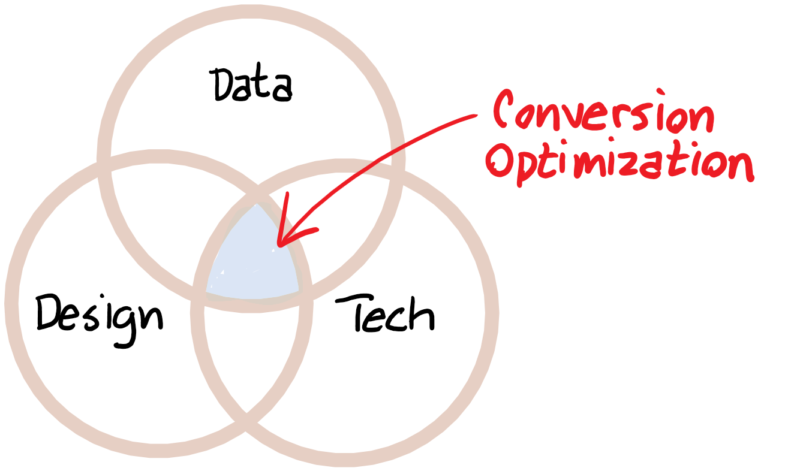What distinguishes conversion optimization from good design?
Columnist Brian Massey argues that conversion optimization is distinct from other web marketing practices.

Is conversion optimization necessary as a stand-alone industry? Based on the growth of conversion optimization services, the answer would seem to be a resounding, “Yes.”
But those of us who have built and grown conversion optimization businesses can’t rest on our laurels. Things change as industries mature, and the conversion optimization “industry” has changed a lot since I started blogging about it in 2006.
Let’s not go down that path
My concern is that the collection of practices and disciplines called conversion rate optimization, or CRO, will devolve into the horror show that the SEO industry became.
For years after the idea of gaming Google became mainstream, SEO agencies took customers for wild and disappointing rides, promising “page one” in no time, and delivering page one for keywords that didn’t help the business. Black-hat practices, buying directory links, and other short-term solutions left many businesses with no traffic when Google released the tame-sounding Panda and Penguin updates. And then these SEO firms just disappeared.
SEO hurt many businesses more than it helped. Many never recovered. I’ll never be part of a CRO industry that becomes anything like that.
In some ways, CRO is headed down that dark path that SEO took. Any design firm worth their salt is adding the words “Conversion Optimization” to their website. However, most aren’t changing what they do.
New conversion optimization teams are springing up, and this is a good thing for the growth of the industry. However, firms promising to “3x conversion rates” in three months and offering to take a percentage of additional sales for payment are suspect.
Pay-for-performance schemes can misalign goals. If the optimizers hit it out of the park, these firms become too expensive to retain. If they don’t, they will wander away and spend time on easier clients.
This smells like VC-style conversion optimization. Bring on 10 clients. One of them will be wildly successful, filling the agency’s coffers. The other nine should be cut loose as quickly as possible. This would not be good for a stand-alone industry, in my opinion.
Is conversion optimization really a different animal?
CRO affects every part of the digital marketing skill set that agencies have traditionally provided: layout, design, copy, images and user experience. But we isolate ourselves from agencies with one distinction: We rely on data to inform our layout, design, copy, images and user experience decisions. Or some of us do.
As an industry, there are certain design activities that seem to be outside the realm of conversion optimization. One of these is the website redesign.
Conversion optimizers can offer some redesign insurance, doing tests on their current site to hedge their redesign bets. Too often, redesigns reduce the conversion rates, as FinishLine and Marks and Spencer illustrated.
Ultimately, optimizers can only offer to come back in after the launch of the new site and redesign the redesign using reliable behavioral science.
And this is the tweetable conclusion we inevitably come to: Conversion optimization is redesign.
This is not so surprising when you consider that redesigning a website is conversion optimization. When a business says, “Let’s redesign the website,” they do it to improve their online fortunes, to increase customer acquisition and retention. Website redesigns are just big, fat, sloppy conversion optimization exercises.
It’s hard to resist a redesign, though. When a new CMO comes into the business and offers the team a big budget to redesign, how can they turn it down? Nothing will divert the attention of a struggling marketing team more than a Hollywood-style redesign.
And so, redesign-as-conversion-optimization-strategy goes on. But this is not conversion optimization as we define it.
The crux of our existential crisis is this: What distinguishes conversion optimization from good design?
What sets CRO apart?
If conversion optimization is redesign, then what sets a CRO agency apart from a design firm?
Is it the data? Can an agency add a few data scientists and call themselves data-driven? Could my agency, Conversion Sciences, buy a design agency and still call ourselves a conversion optimization agency? I think that behavioral data will become a daily part of communicating, such that this distinction alone isn’t sufficient.
Is it the goals? Conversion optimization is very focused on delivering bottom-line results — more leads, more sales, more subscribers, more downloads. Agencies measure success on a wider range of metrics, including engagement, attention and clicks. Conversion optimizers measure these with amazing precision to analyze their impact, but they don’t reliably predict conversion success.
Is it the tools? Tools don’t increase website performance, but they make data collection cheaper and cheaper with each passing month. It does take a certain knowledge of data science to use them responsibly, but you don’t have to be a data scientist to be successful with them.
Is it access? CRO agencies and their kissing cousins, growth teams, bring data directly to business managers. In a way, this does an end-run on the design team and the design agency. Traditionally, designers did the user research and based their design decisions on this research. Management gets a report, but designers make the decisions. Now, managers are giving business questions directly to conversion optimizers who design tests to help them make decisions.
The key to good conversion optimization is putting data in the service of the business managers. It is a combination of design, technology and data at the beck and call of managers that defines it.

CRO is the intersection of Data, Design and Technology.
The impact of advancing technology
The various behavioral data technologies — testing, user research, analytics — are improving at a rate that follows Moore’s Law, with capability at least doubling every two years and prices dropping accordingly. We can now do eye-tracking studies for a few hundred dollars using webcams that used to require expensive cameras, software and a lab.
Will innovations like artificial intelligence put conversion optimizers out of a job? I think not. Yet, within a few years, personalization solutions will be able to identify small segments of visitors and deliver the experience that is most likely to give them what they want.
The variety of experiences will still be designed by humans before giving them to the AI. Just as the number of bank tellers has gone up since the advent of ATMs, I think advanced tech will increase the demand for professionals that can meld data, design and technology together.
We just may not call it conversion optimization anymore.
What we will call it is to be seen. For now, the CRO industry is important for pioneering a melding of design, data and advancing tools. We are the translators between the left and right hemispheres of a business’s brain, the creative and the procedural. We are the corpus callosum for online campaigns.
Unfortunately, corpus callosum is a terrible name for a business services industry.
Opinions expressed in this article are those of the guest author and not necessarily MarTech. Staff authors are listed here.
Related stories